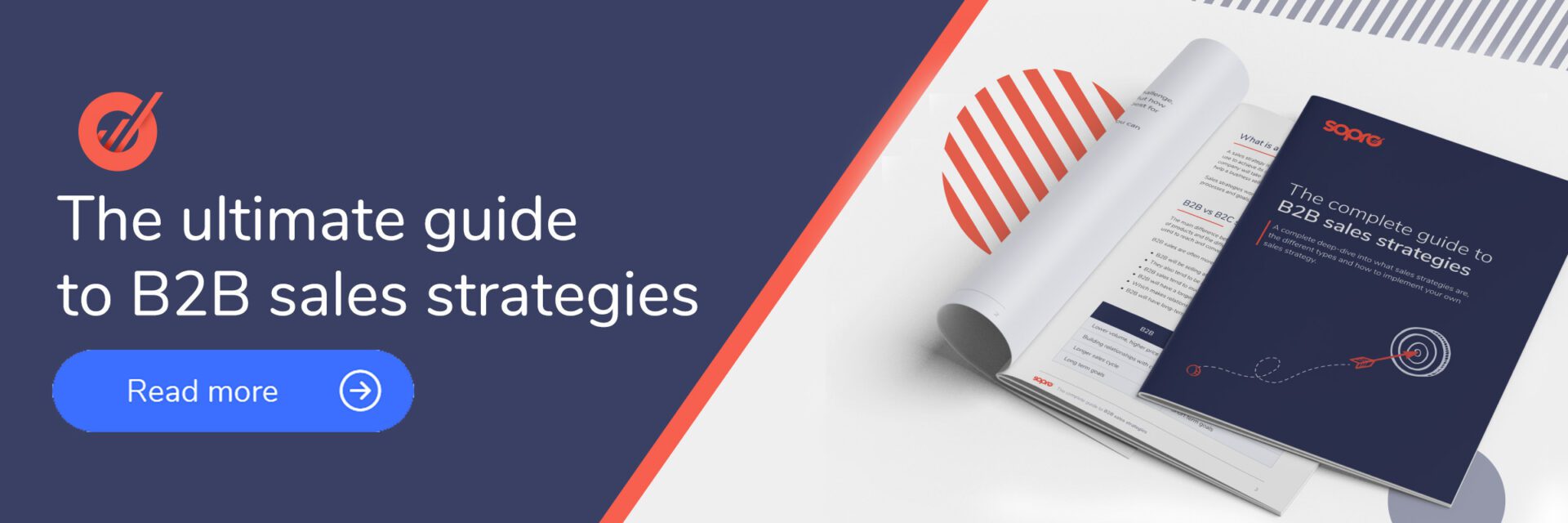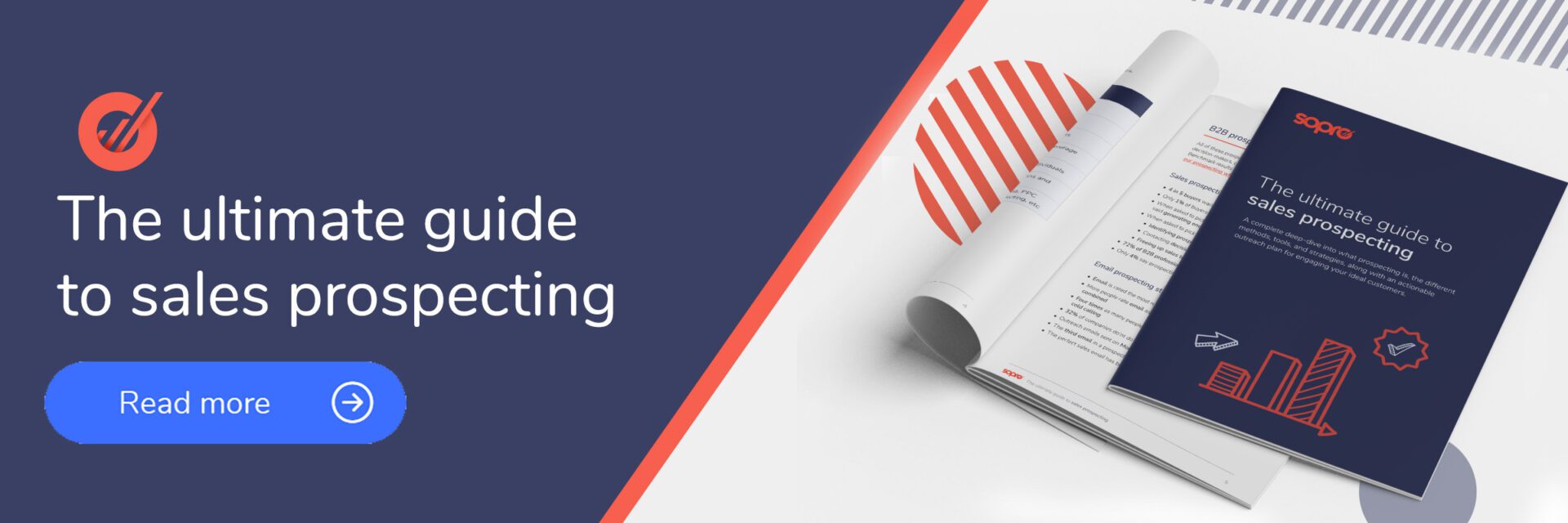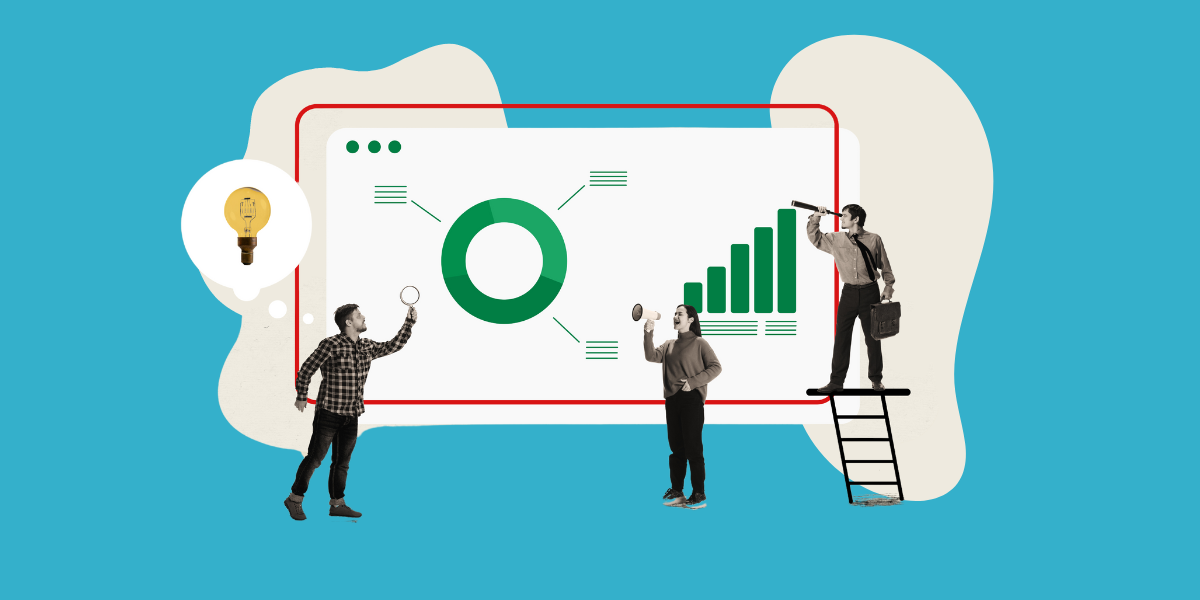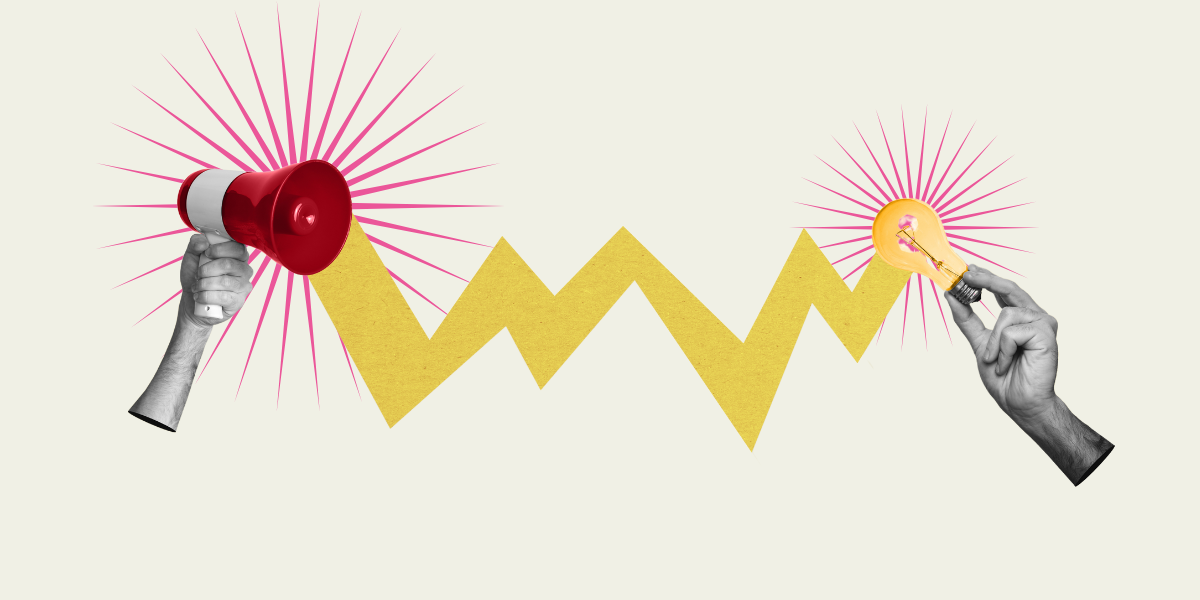The ultimate guide to sales forecasting
In this guide
- What is sales forecasting?
- Why should you have an accurate sales forecast?
- Bottom-up sales forecast vs. top-down sales forecast ⬇️⬆️
- Different methods of forecasting
-
How to create a sales forecast in nine steps
- Step 1: Gather historical data
- Step 2: Define your forecast period
- Step 3: Identify relevant factors
- Step 4: Analyse market data
- Step 5: Segment your sales
- Step 6: Determine which forecasting methods you want to use
- Step 7: Apply forecasting techniques
- Step 8: Validate and adjust
- Step 9: Monitor and update
- Challenges you might face (and how to overcome them)
- Forecasting techniques
- What’s next for sales forecasting?
- Using forecasting software
- Using Sopro to help with sales forecasting
The ultimate guide to sales forecasting

What sales forecasting is, why you need it, and how to come up with a sales forecast that works for your business.
Sales forecasting isn’t just saying, “I think we’ll earn this much this year”. It’s a complex practice that can change the face of your business if you do it properly.
Sales forecasting can provide valuable insights for strategic decision-making. But with the majority of sales reps’ predictions being less than 75% accurate, how can you give yourself the best chance of making good business decisions?
In this guide, you’ll learn how to create an accurate sales forecast that’s in line with your business, along with best practices for optimising your sales strategies to thrive in a competitive marketplace.
What is sales forecasting?
Sales forecasting is the process of predicting future sales performance based on historical data, market trends, customer behaviour, and other relevant factors. And although predicting the future isn’t easy (or even possible!), it can give you an accurate picture of what’s to come.
Sales forecast definition
A sales forecast is a prediction of how much a company expects to sell and earn in the future. It takes into account past sales data and market analysis to estimate future performance.
Why should you have an accurate sales forecast?
There are lots of reasons why it’s important to have an accurate sales forecast, and it goes beyond just to “make planning easier”.
An accurate sales forecast is crucial for success. It helps you make smart choices, use your resources well, predict what customers might want, and plan for steady growth.
Let’s take a deeper look:
- Strategic decision-making: Sales forecasts provide the insights that guide strategic decisions. They help in planning production, managing inventory, allocating resources, and budgeting effectively.
- Goal setting and performance evaluation: Sales forecasts help you set achievable goals for salespeople, teams, and the entire organisation. They act as reference points to measure performance, spot areas that need improvement, and make necessary adjustments.
- Resource allocation: Sales forecasting helps you use your resources wisely, like people, money, and production capability. It ensures you allocate them effectively to meet the demand and achieve your sales goals.
- Financial planning: Sales forecasts play a big role in managing your money. They help you plan your budget, predict how much money you’ll make, and understand your expenses. This way, you can make smart financial decisions, invest wisely, and keep your finances stable.
- Inventory management: Sales forecasts help you keep track of what you need to have in stock. They make sure you don’t have too much or too little inventory, so you can meet customer demand and run your business smoothly.
- Market opportunity identification: Sales forecasting helps you spot opportunities for your business to grow. It helps you see where there are chances to do well, like new markets or products. With this information, you can adjust your plans, aim for those opportunities, and expand your business.
- Risk mitigation: Sales forecasting helps you see potential problems coming your way. It helps you recognise things that could go wrong, like market changes, what customers like, or competition. This way, you can be prepared and take action to overcome those challenges.
Bottom-up sales forecast vs. top-down sales forecast ⬇️⬆️
Both bottom-up and top-down sales forecasting approaches have their advantages and are suitable for different scenarios. But what do these terms actually mean?
What is bottom-up sales forecasting?
Bottom-up sales forecasting is the process of gathering sales predictions from individual salespeople, teams, or regions to estimate your future sales. This approach is helpful when you have many sales units, different products, or various markets.
It lets you analyse each part in detail, giving you a complete picture of the sales forecast. Bottom-up forecasting can be more accurate when you have reliable data at the individual level, making it a reliable method.
What is top-down sales forecasting?
Top-down sales forecasting takes a different approach. It begins with studying the overall market and uses that information to estimate future sales. This method works well when there’s limited data, fewer sales units, or when you’re making bigger strategic decisions.
With top-down forecasting, you get a wide view of market trends, industry growth, and other big-picture factors that affect sales. It’s a faster way to set initial goals and decide how to use your resources.
Which is best?
In real life, businesses often use a mix of both bottom-up and top-down sales forecasting methods. They begin with a top-down forecast to set the bigger goals and then fine-tune it using bottom-up analysis for more precise information.
Whether to use bottom-up or top-down forecasting depends on factors like the data you have available, how complicated your sales structure is, and how accurate your predictions need to be for making those decisions.
Different methods of forecasting
In addition to bottom-up and top-down methods, there are various ways to do sales forecasting. Some use expert opinions and market research, while others rely on historical data and statistical models. The method you choose depends on your specific business needs.
Let’s explore the different sales forecasting methods and see how they can be applied to your business.
Historical forecasting
Historical sales forecasting, also known as the straight-line method, is a method of predicting future sales performance based on past sales data. It involves analysing historical sales patterns, trends, and seasonality to project future sales volumes and revenues.
Historical forecasting tends to be the most used method of sales forecasting as it’s often seen as the easiest method. How much am I going to sell based on how much I’ve sold before? But just using this method might not give you an accurate forecast. As we’ve seen with Covid 19, life is unpredictable, and sales can change quickly.
Historical sales forecasting example
Take a company that sells office furniture. By examining historical sales data, they can identify seasonal patterns, like increased demand during the back-to-school season or year-end office renovations. They can also observe any long-term growth trends or fluctuations due to economic factors.
Pipeline forecasting
The pipeline forecasting method is more time-consuming. The process involves assessing each opportunity in your sales pipeline and determining the likelihood of its successful closure. This assessment takes into account specific company variables, such as the representative’s historical win rate and the value of the opportunity.
This method only works if you can provide high-quality data, and any small mistakes result in an inaccurate forecast.
Pipeline sales forecasting example
Let’s imagine a company that sells customer relationship management (CRM) software. The pipeline forecasting method divides the sales process into different stages, such as lead generation, initial contact, product demonstration, proposal submission, and contract negotiation.
At each stage, the sales team evaluates the quality and progress of the deals in their pipeline. They assess factors such as customer engagement, level of interest, budget availability, decision-making process, and competition. Based on these evaluations, they assign a probability of success to each deal.
The company can then calculate the expected value of its sales pipeline by multiplying the probability of success at each stage by the potential deal value. This provides them with a forecast of potential revenue based on the current state of their sales pipe.
Opportunity stage forecasting
Opportunity stage forecasting assesses the likelihood of leads turning into successful deals based on their current stage in the sales process. As leads progress further along the sales pipeline, their chances of converting into successful deals increase.
By understanding the stages of the sales pipeline, businesses can predict which opportunities have a higher probability of closing and focus their efforts accordingly.
Opportunity stage forecasting example
Let’s consider an IT company that sells sales forecasting software. The sales team is responsible for managing the sales pipeline, which consists of different stages such as “Prospecting,” “Qualified Lead,” “Demo Scheduled,” “Proposal Sent,” and “Negotiation.”
Suppose the company has gathered data from the past year, including the number of opportunities at each stage, the average time spent in each stage, and the conversion rates from one stage to another. Using this data, they can build a forecasting model to estimate the future progress of opportunities.
For instance, based on historical data, the model might predict that out of 100 opportunities currently in the “Prospecting” stage, 30% will progress to the “Qualified Lead” stage, 20% will reach the “Demo Scheduled” stage, 10% will move to the “Proposal Sent” stage, and 5% will enter the “Negotiation” stage.
Using this forecast, the sales team can estimate the number of deals they can expect to close in the coming weeks or months.
Length of sales cycle forecasting
Length of sales cycle forecasting is a revenue forecasting method that utilises the duration of the sales cycle to predict future sales. By understanding the time it takes for opportunities to progress through the sales cycle, businesses can forecast their future sales with greater accuracy.
Length of sales cycle forecasting example
Let’s imagine a Manufacturing company that sells Industrial machinery. The sales cycle for their products typically involves several stages, such as initial contact, needs assessment, proposal preparation, negotiation, and final purchase decision.
To forecast the length of the sales cycle, the company can analyse historical data and key variables that impact the sales cycle duration. These variables could include factors such as the complexity of the product, the size of the customer’s organisation, the involvement of decision-makers, and any industry-specific considerations.
Using this historical data, the company can develop a forecasting model to estimate the expected length of the sales cycle for new leads.
Intuitive forecasting
Intuitive sales forecasting involves leveraging qualitative information, such as market trends, customer feedback, and industry insights, to make subjective predictions about future sales performance. This approach is less reliant on quantitative data and statistical analysis and instead uses the intuition and expertise of the forecasters.
Not all of us believe in the “gut feeling,” but intuition can be a powerful tool. And although intuitive forecasting relies on your intuition, it’s not all guesswork. If you have a “gut feeling” about how the quarter is going to go, it’s probably based on a number of subconscious factors, including years of experience in that market.
Intuitive forecasting example
Imagine a fashion retailer that wants to predict the next big fashion trend before it becomes mainstream. They recognise that being ahead of the curve can give them a competitive advantage and increase sales. In this case, intuitive forecasting involves using a combination of industry knowledge, market trends, and intuition to anticipate upcoming fashion trends.
The retailer’s team of fashion experts and trend analysts closely monitor various sources of information, such as fashion shows, designer collections, street style, social media, and fashion blogs. They also keep an eye on influential fashion figures and celebrities to understand their fashion choices and preferences.
Using their expertise and intuition, the team identifies patterns, emerging styles, and unique fashion elements that are gaining popularity. They also take note of broader cultural and societal influences that can impact fashion, such as art, music, technology, and social movements.
So whereas this sounds like guesswork, it’s actually a very research-heavy and niche way of doing your sales forecasting.
Multivariable analysis forecasting
Multivariable analysis forecasting uses a combination of multiple business data points – like the ones detailed – to predict sales outcomes. And it’s often seen as the most sophisticated forecasting approach.
Multivariable analysis forecasting example
Let’s consider a hypothetical scenario where a Retail company wants to forecast its sales for the next quarter. The company decides to use multivariable analysis to incorporate various factors into their forecast. Here are some variables they might consider:
- Historical sales data.
- Economic indicators such as GDP growth, inflation rates, consumer spending patterns, and interest rates.
- The effectiveness of its marketing campaigns, including advertising efforts, promotions, and social media campaigns. They consider how these initiatives have historically influenced sales and their potential impact in the forecasted period.
- The performance of its competitors, including pricing strategies, product offerings, and market share.
- Seasonality and trends.
- External factors.
- Internal variables that can influence sales, such as changes in pricing strategies, product launches, distribution channels, or alterations in the sales team structure.
Using multivariable analysis, the company combines and analyses these factors to create a comprehensive sales forecast. They may employ statistical techniques such as regression analysis, time series analysis, or machine learning algorithms to uncover relationships and patterns among the variables.
By considering multiple variables simultaneously, they aim to generate a more accurate and robust forecast that accounts for the complex interplay of various factors impacting sales performance. Multivariable analysis forecasting tends to be seen as the most accurate method of sales forecasting.
How to create a sales forecast in nine steps
Creating a sales forecast means trying to predict future sales volumes and revenues for your business. While the process can vary depending on your industry and specific circumstances, we’ve put together a general framework to help you create a sales forecast.
Step 1: Gather historical data
Gather data from past periods, preferably covering a long time. This data will be the basis for your forecast and give you information about trends, seasonal patterns, and other repeating behaviours.
Step 2: Define your forecast period
Determine the timeframe for which you want to create the sales forecast. It can be monthly, quarterly, or annually, depending on your needs and industry norms.
Step 3: Identify relevant factors
Consider the variables that influence your sales, such as:
- market conditions
- customer behavior
- marketing campaigns
- pricing changes
- new product launches
- industry trends
These factors will help you make informed projections.
Step 4: Analyse market data
Conduct market research to understand the overall industry landscape, market size, competitors, and consumer preferences. This information will help you assess market growth potential and identify opportunities or challenges that may impact your sales.
Step 5: Segment your sales
If applicable, break down your sales by product categories, customer segments, geographic regions, or distribution channels. This segmentation allows for a more accurate forecast, considering different variables affecting each segment.
Step 6: Determine which forecasting methods you want to use
As you’ve seen, there are various methods you can use for sales forecasting. Which method you use depends on the size of your company and other factors. But remember, you can use a number of different methods to make your sales forecast more precise.
Step 7: Apply forecasting techniques
Depending on the forecasting method you’ve chosen, you’ll need to apply relevant techniques like trend analysis, regression analysis, moving averages, or time series analysis. We’ll go into further detail on those in the next section. Consider using spreadsheet software or specialised forecasting tools to simplify calculations.
Step 8: Validate and adjust
Review your forecast by comparing it with actual results from the past to assess its accuracy. Adjust your projections based on new information, market changes, or internal factors that may affect sales.
Step 9: Monitor and update
Continuously monitor your sales performance against the forecasted figures. Update your sales forecast regularly to reflect evolving market dynamics, changes in business strategies, or any significant external factors.
Remember, a sales forecast is an estimate and not an absolute prediction. It should serve as a planning tool to guide your business decisions and help allocate resources effectively. Regularly reviewing and revising your forecast will improve its accuracy over time.
Challenges you might face (and how to overcome them)
Company changes
Internal changes in your company can impact your sales forecast. One of the main things is hires and fires. You need to make sure you’re including any planned changes in the number of sales reps you have on board, including when they’ll be fully trained by. This way, your revenue won’t significantly drop or increase without you knowing why.
Also, you’ll need to consider any policy changes that will affect sales, such as discounts and promotions. As well as territory shifts, for example, if you’re planning to move business into a new area, it might take salespeople a little longer to adjust and, therefore, close deals.
Market changes
The market is constantly changing, no matter what industry you’re targeting, which means you need to be doing regular market research.
This means looking at:
- Competitive changes
- Economic conditions
- Industry changes
- Legislative Changes
- Product Changes
And you need to keep in mind seasonality. Things like Christmas and summer holidays will make an impact on sales.
Want to know more? Download Summer, sea and sales: how to avoid the summer slump.
Forecasting techniques
As we mentioned earlier, there are also different forecasting techniques you can use to make sales forecasting easier.
Trend analysis
Sales trend analysis is a process of examining historical sales data to identify patterns, tendencies, and changes in sales performance over time.
To conduct sales trend analysis, businesses typically collect and organise sales data, often using spreadsheet software or specialised sales analytics tools. They analyse that data visually through charts, graphs, or dashboards to identify patterns and trends. Statistical techniques, such as moving averages, regression analysis, or time series analysis, may be employed to quantify and forecast sales trends.
Regression analysis
Regression analysis is a statistical method used to estimate the relationships between a dependent variable and one or more independent variables. But what does that mean? Basically, it tells you the relationship between two or more variables – and if they correlate or not.
An example would be if a restaurant wanted to check to see if people buy more ice cream depending on the weather. You can plot the ice cream sales and the temperatures over a quarter on a chart and if there’s an upward trend of ice cream sales to high temperatures, then this can help you make predictions – meaning you can stock accordingly.
Moving averages
A moving average is a way to smooth out the ups and downs in your sales data and focus on the overall trend. It helps you see if your sales are generally going up, going down, or staying relatively stable.
Let’s say you want to calculate a 3-month moving average. This means you’ll need to look at your sales data for the past three months and find the average.
In January, your company made £14,000 in sales. That’s your first data point. In February, you made £12,000, and in March, you made £11,000.
To calculate the moving average for these three months, you add up the sales for each month (£14,000 + £12,000 + £11,000 = £37,000) and divide it by the number of months. So, the moving average for these three months is £37,000 divided by 3, which equals £12,333r, which is your moving average.
By using moving averages, you can get a better understanding of the overall sales trend in your clothing store. It helps you identify if your sales are increasing or decreasing over time, regardless of the smaller fluctuations that can occur from month to month.
Time series analysis
Time series analysis essentially involves anaylising data over a period of time, but each data point is recorded in consistent intervals. This gives you information on how the data changes over time so you can see seasonality across the year, as well as the overall trends. In order to ensure consistency and reliability, a substantial amount of data points is typically required for time series analysis.
What’s next for sales forecasting?
The future of sales forecasting is looking good. Using AI and new technologies, sales forecasting is becoming more and more accurate. We understand and can predict customer behaviour better than ever before, and we can reach customers in ways we could have never imagined. By leveraging past data, artificial intelligence (AI) has the capability to forecast future success.
However, not all AI systems are specifically designed for this purpose. To generate accurate predictions, these systems need to rely on historical data as well as precise models that account for anticipated future changes.
Using forecasting software
An essential tool of forecasting is sales forecasting software. We’re expecting you to do everything manually, you’ll need some help.
Forecasting software tools:
- Salesforce Sales Cloud: Salesforce is a comprehensive customer relationship management (CRM) platform that offers powerful sales forecasting capabilities. It provides a range of forecasting features and customizable dashboards for sales analytics.
- Zoho CRM: Zoho CRM is another widely used CRM software that includes sales forecasting functionality. It allows users to create accurate forecasts based on historical data, pipeline analysis, and sales trends.
- Hubspot Forecasting Software: This forecasting tool offers a high degree of customisation, robust functionality, and user-friendly interface. With the ability to customise forecast categories and models, you can effortlessly adapt the tool to align with your specific business requirements.
- Anaplan: Anaplan is a cloud-based planning platform that offers sales forecasting as one of its key features. It allows users to create detailed sales forecasts, collaborate with team members, and perform what-if analysis.
- Tableau: Tableau is a data visualisation and analytics tool that can also be used for sales forecasting. It enables users to create visually appealing forecasts, perform data analysis, and share insights with stakeholders.
Using Sopro to help with sales forecasting
Sopro is a B2B sales engagement platform that marries state-of-the-art tech and human expertise to help you find leads and close deals. We excel at identifying your perfect prospects, engaging with them using personalized emails, and seamlessly connecting them with you when they’re prepared for a sales discussion.
Sopro can provide you with a steady and reliable stream of leads. And once you know what’s coming, it’ll be a lot easier to accurately forecast sales and create a sales forecast model that you can use consistently. Take the unpredictability out of sales and book a demo with us today.











